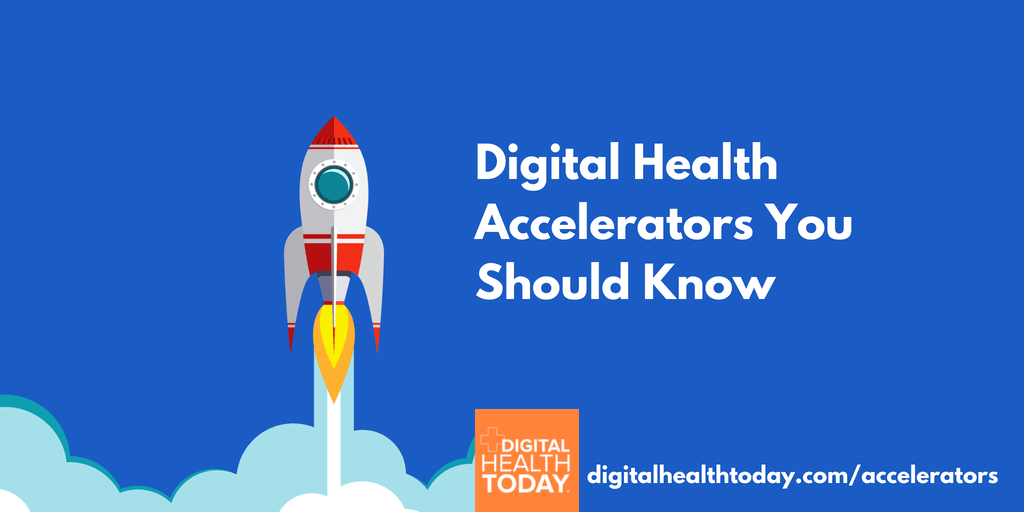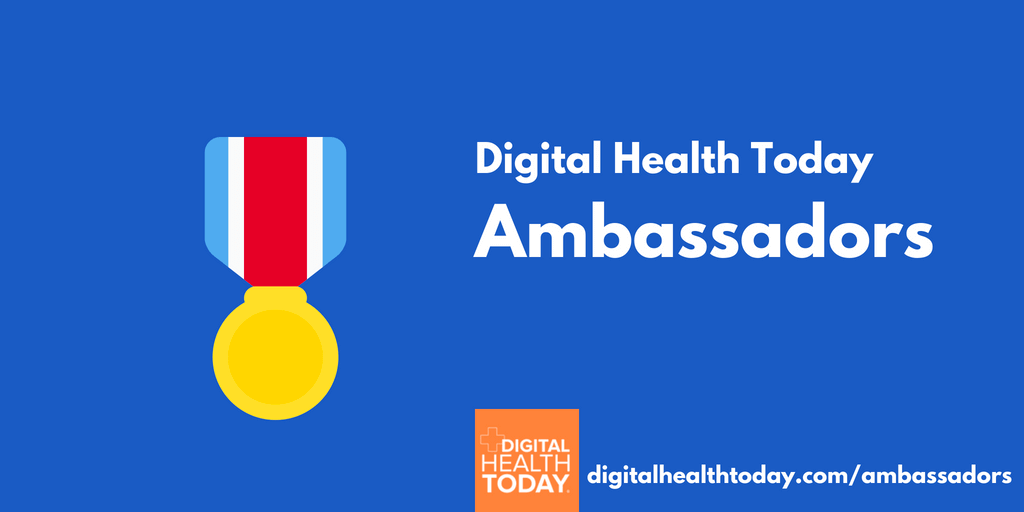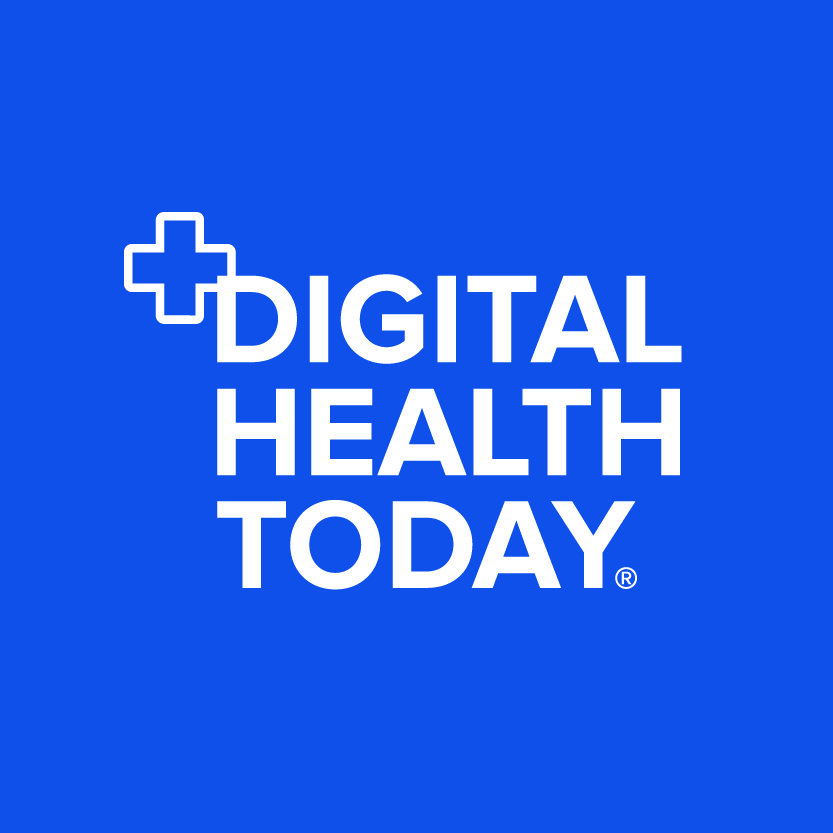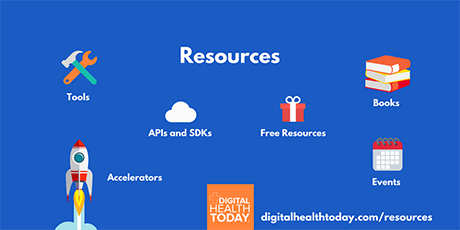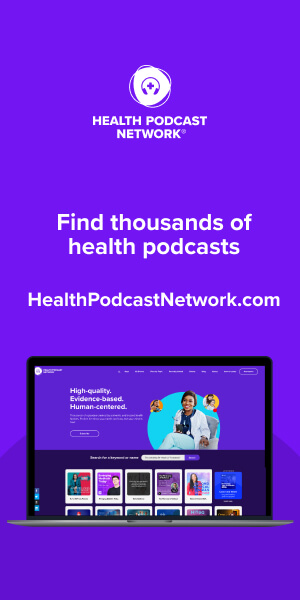Transcript
0:03 Tony Estrella
Welcome to Digital Health Today: Asia Pacific Edition, your go-to podcast to learn about the transformation of healthcare in a region with over 4.5 billion people across more than 40 countries. I’m your host, Tony Estrella.
Today, I’d like to introduce Shuchin Bajaj. Shuchin is an entrepreneur doctor, which means he is passionate about staying close to the needs of individuals– always. As we’ll hear, he’s a difference maker in bringing better health to the rural population of India. It’s because of people like Shuchin that we know people’s lives can improve. Shuchin, welcome to the show.
0:37 Shuchin Bajaj
Thank you very much, Tony, for having me here. It’s good to see you.
0:40 Tony Estrella
Good to see you too. So let’s start first with a background of India. It’s an enormous region, 1.2 billion+ people and it’s got a range of landscapes and geographies– from deserts, to mountains, to farms, to large urban centers, to the largest cities in the world. Give us a background as to how you, from a healthcare perspective, look at India and segment the population into groups that you can provide care for.
1:06 Shuchin Bajaj
So India I think is a continent in itself and not just one country. Looking at India as one is, I think, exactly looking like Europe as one, or the whole of the Americas as one unit. There are many different areas of India that have different needs and there are different population segments of India that have different needs. You can have the richest of people coming from India are living in gated communities with all the possible amenities at their doorsteps and at the flick of a phone. But on the other hand, you may have a lot of communities that live in very financially challenging conditions and do not have access to even the basic healthcare and education.
What we at Ujala Cygnus wish to do is give access to all these communities, and make financial status a criteria that should not be there for accessing high quality healthcare. We want to remove financial ability completely as a criteria for accessing healthcare, and I think for that, technology is going to be a great leveler.
See, India is a land of vast inequalities. On the one hand, we are sending probes to Mars, and on the other hand, we are struggling to provide even the basic public transport to our population. As I said, five-star hospitals on one side and very struggling and poorly maintained, poorly staffed government hospitals on the other. I think the thing is that India is too big to ignore, so if the UN has to achieve its SDG goals in any way, India has to be a very active part of that. We as an organization are trying to achieve the healthcare part of it in as many communities as we can.
2:55 Tony Estrella
So we look at some of the broad challenges, and you mentioned a couple; roughly 72% of the population lives in rural environments. So access, affordability, education– tell us a little bit more about those challenges, because that’s where your group focuses most, in the rural population.
3:14 Shuchin Bajaj
Yeah, so we work in very small towns and with rural populations. The accessibility, affordability, and availability of healthcare is very, very challenging. It’s also challenging to convince very high quality doctors and nurses and other paramedics to go and work with these communities, because it’s aspirational for doctors and nurses to come to the big cities rather than go back to those small towns. So when I started off, it was quite a challenge for me to even convince my own family members; they were aghast that I was leaving this wonderful, secure job at the biggest hospital in India and trying to move out back to the small towns where my father was, like, struggling to come here to the big city from those small towns, and now you’re trying to go back.
It’s not just the fact that the communities have lack of access, they are also afraid of going to these big hospitals and afraid of accessing these hospitals themselves because they feel they may be too expensive. Or they are not very confident about entering these hospitals, and they try to get themselves treated with local quacks and local practitioners, until they get really deteriorated and complicated, and that is the time when they come in. So the cost of the disease automatically balloons up.
We all realize that preventive healthcare is much better than the curative, sick care that we are all doing currently. We don’t really understand the cost of the disease in its entirety. If you say the cost of the disease for a simple diabetic patient who has everything under control, it might be less than 500 rupees a month for his medicines. But if he does not take care of that 500 rupees, if he is too afraid to go to a doctor to control his disease, unfortunately he, for example, develops a diabetic foot. We amputate almost one foot every minute due to diabetes across the world, one of the most common complications. If he comes to our hospital with the diabetic foot because his local quack can no longer manage it, we will have to amputate that foot. So we may consider that the cost of the disease is now about 20,000 rupees instead of 500, which he spent for his amputation. But we’ll forget that there is a big indirect cost of the disease; when he goes back home, now he’s out of a job because he has no leg, so he can’t go to work. He has lost earnings worth [inaudible] of rupees over his future, but also the intangible cost of the disease, which is the tertiary level (which is the scariest) is that now since he’s lost his job, he will pull his children out of school and send them to work. So many future generations will be destroyed because this person did not have the wherewithal or the access to get his blood sugar under control, and he could not meet a doctor regularly to do that.
This is where we work with these small towns with these rural populations– we do a lot of outreach healthcare camps, go and talk to them, ask them to manage their blood sugar, we do a lot of free treatments, free medicines, etc. In our own small way, we are trying to make sure that the costs of these chronic diseases come down. This is also where, as I keep saying, technology can be a big leveler and enabler, because I personally feel that more than 90% of these chronic diseases can be managed through technology itself.
6:46 Tony Estrella
Great, and it’s inspiring in terms of the difference that you can make. For our audience, just for relative sense, 500 rupees is about $7.00, in terms of the cost that we were describing earlier. The name of your group that you’re the founder and director of is Ujala Cygnus Healthcare Services. You’ve told us a little bit about the mission. But tell us more about the organization that you’ve built so far. How big is it? How many people do you support, or individually support?
7:12 Shuchin Bajaj
Yeah, so we consciously renamed the group as Healthcare Services. We earlier called it Cygnus Hospitals, but we thought that hospitals are just a very small part of what healthcare should be about. As I said, hospitals are mostly sick care, so now we are branching out into a lot of things.
Currently, we have 13 hospitals across four states of North India. Our hospitals are mostly located in very small towns, in which you do not have access to high quality services. Our hospitals mostly look at addressing diseases in which the golden hour is of great importance. Like, if you are unfortunate enough to have a heart attack, let’s say 300 kilometers from a big city like Delhi, you have no choice but to hire a jeep and put the patient in the jeep because ambulances are not very readily available, and try and get the patient to Delhi. Those 200, 300 kilometers can cost you anywhere between two hours and five hours, depending on traffic and road conditions– sometimes even six hours. It’s not very pleasant to have a critical patient in your car while trying to weave through that traffic.
So this whole group was formed due to some personal stories in which I lost some of my relatives who were trying to come to Delhi to access healthcare, and they had called me in advance, but they couldn’t make it. The 13 hospitals are now supported by a large network of outreach clinics, in which we actually go to the village and set up a clinic there. Because as I said, the hospitals mostly focus on sick care– like neurosurgeries, cardiology intensive care, blood banks, or dialysis services– in which you’ve already gotten complicated, and now you’re trying to access this very expensive sick care, which we try to make as cheap as possible.
We do all our surgeries for a flat rate of 10,000 rupees, all-inclusive, all medicines, everything. Whatever surgery you may wish to do– deliveries we can do for as little as 2,000 rupees, which is, like you said, about $20, $25. That is all it costs for delivery in our hospitals.
But still, the preventive part of it gets lost somewhere, so we now have a large outreach clinic network in which we try and address the primary care and the preventive care aspects of the community. That is completely free of cost. We do not charge anything there. The patients are free to come and get access to a qualified MBBS doctor, all investigations, medicines, etc.
Then on top of that now we are building a full digital ecosystem that ties all this together and gives access to even more communities who are not in our direct physical reach. That is the newest piece that we are starting to build up. We have already achieved some success in that piece, but I think over the next one or two years, that will be our focus– to make sure that our reach to our communities is much wider than what we can afford currently through our physical locations.
10:13 Tony Estrella
That’s marvelous, I think the impact on individuals is really clear. You’re stitching online and offline together in an integrated way. And I admire how you’ve changed the way that your mentality goes beyond sick care to prevention, and all the way up to the name of the organization. It’s what we would aspire to see in health systems around the world. So I’m curious, you’re also an investor in supporting start-ups and technology, and if you look at your business through the lens of an investor, how do you manage the business? Clearly, you’ve got physical infrastructure and you’re bringing in digital health. Tell us a bit more about how you look at the overall management of the business. What are your challenges to achieve even more scale?
10:55 Shuchin Bajaj
Yeah, I do invest a lot in various start-ups and companies, because when I started out, as I told you, I come from a very financially challenged background. When I started out, I had no money at all. But there was this passion to change things. And luckily, a lot of good people joined me on the way and put their money behind my venture and expressed their faith in what I was trying to do. Investing into new start-ups is a way of giving it back a bit.
Also, I feel that if I keep connected with them, I get exposed to the newest technologies, the newest thinking, so it’s a bit of a selfish thing as well. I sit on the board of the Foundation for Innovation Technology Transfer at IIT Delhi, which is one of the premium educational institutions. IIT Delhi is one of the best educational institutions, and we get a lot of start-ups coming out of that, so sitting on the board that gives me early access to a lot of newer technologies and newer ways of thinking.
As you said, how I look at it through the investors lens is, if you consider the entire course of the disease (that triple bottom line, as we say) the changes that we’re making are an investor’s dream– to build this whole community of healthcare access. But a purely hospital chain healthcare in itself, as we all know, is a very challenging business; to make it sustainable, without any aid, and trying to serve as the bottom of the pyramid where financial challenges are always acute. We always have this rule that we will not turn away any patient due to healthcare costs, so we will treat anybody and everybody who ever comes in. We’ll do our best to try and cross-subsidize things through people who are being paid for by government insurances or private insurances, or some affluent people who want to come in and stay in deluxe single rooms with air conditioning and everything. We try and cross-subsidize our operations from these segments to the segments that we are trying to cater to.
But overall, I think once we have the digital piece in play, and the entire outreach mix comes into play, the impact will be so high, and the ownership of the community will be there that we will own the entire community in terms of healthcare services. Then the investors will get a much higher return compared to just investing in hospital services.
13:29 Tony Estrella
So it’s a dual nature of shifting from the high-cost sick care, and as you bring those costs down, then the overall ecosystem that you’ve built benefits– in collaboration with having ongoing engagement through the community and continuing to bring more and more people into your system.
13:46 Shuchin Bajaj
Yes, absolutely. So right now, we are catering to, say, less than 1% of the people who actually fall very sick and then come to our hospitals. But now we are aiming to access the entire community in terms of all their healthcare needs; and not just primary healthcare needs but also healthcare information. Any information they want to access, even if they are not sick or not even at the risk of falling sick, we aim to be the organization where they should turn to and reach out to access any sort of information through our vast digital network and video channels and vernacular networks.
Most of the digital healthcare space in India still is dominated by players who reach out to communities in the English language. So they are restricted to the bigger eight or nine cities in India where most of the English language speaking people live. This is where they operate out of, this is what they cater to, and this is what their entire network is about. That is what in our language we call India, but the part that we call the “rural India” and the “semi-urban India,” the India that is very comfortable in the vernacular language is completely underserved. Completely. There is no access to them for high quality digital healthcare.
I was just reaching out to these vernacular language websites to understand what is going on. The best example would be if you write in Hindi about cures for cancer, the top 10 hits would be all magical cures. You take this juice and cancer will disappear in three days; or you eat this thing, and cancer will go in 10 days; or you do this yoga exercise, and cancer will never come to you. All these 10 magical cures were the top hits in Hindi. So in Hindi, there is no real scientific data or scientific content that is available right now, and that is what we aim to provide to the community.
15:42 Tony Estrella
And with these community programs, something you shared with me earlier is that you go out to these programs and you’re even finding people who are diabetics, but they didn’t know they were diabetic. So tell us a bit more about what is the aim and frequency of these community outreach programs. Because they sound very invaluable and impactful.
15:59 Shuchin Bajaj
Yeah. So we as a group do almost 40 healthcare camps a day in various locations, various places where we are, and we are finding almost three or four new diabetics across these camps every time who never knew that they were diabetic. Their blood sugar would be like 300, 400, and they never bothered to go and consult any doctor. This is what we are reaching out to.
Because we do all these camps, each camp has an attendance of approximately 80 to 100, to sometimes– when there is a big camp– almost 200, 300 people come. It’s not just about health check-ups, it’s about health education. There are a lot of talks there. The doctors come and talk about things, the community leaders come and talk about things– how it is important to maintain your health, get regular check-ups, go and see qualified doctors, instead of the unqualified quacks that are being consulted right now. That is, I think, a great thing to go to the community and talk about these things, because the community itself is very intelligent; it’s just that their access has been blocked due to a variety of reasons.
For the last many years, the primary health centers that the government had set up do not see any doctors coming in regularly, and they are not in a very good condition. The community has nowhere to go but to this local quack who is sitting in their village. But if you do show them that this is possible and financially, this is very easy, it’s very cheap, there is no money involved, they will immediately shift their behaviors, because they also want high-quality services.
Then we start finding out these people who have high blood pressure, who may have big uterine fibroids that are bleeding all the time and causing anemia. We find a lot of anemic young girls as well who, because of nutritional deficiencies, when they go on to become mothers, will create another generation of weak and sick children coming out. All these preventive things that we do I think are creating a long-term impact for many future generations to come. That is something that we’re really proud of, in addition to our hospitals.
18:13 Tony Estrella
Amazing. And you know, the period of time that we’re in with the pandemic clearly has shifted a lot of daily life and our expectations of the future as well. How has COVID created a long-term shift in the way that you’re managing your business? Also– this started the conversation– you’re an entrepreneur doctor, staying close to the needs of individuals. What are you seeing from individuals, and what’s happening to them?
18:38 Shuchin Bajaj
So as Lenin famously said once, there are decades when nothing happens, and then there are days in which decades happen. I think last March, in India, was one of those few days when decades’ worth of things suddenly changed. In March 2020, the lockdown suddenly happened; India went in for a very hard lockdown at two days’ notice. And suddenly the [inaudible] that we were running to the tune of thousands of people daily in our hospital suddenly shut down completely. There was not even one patient coming in. Elective surgery suddenly completely stopped.
So like Reid Hoffman said, entrepreneurs are the people who jump off the cliff and then start building parachutes. We were actually pushed off the cliff, and we didn’t know what to do. Like every lazy person does, we had also been convincing ourselves all the time that we work in rural communities, we work in semi-urban communities, and our communities are not ready for digital health, they are not ready to access it. Who will teach them? Our doctors are too busy in their daily practice– how will they devote time to digital health? But then when we actually were pushed off and had zero [inaudible], zero electives, we started out our telemedicine platform in two days flat. And within a matter of months, we were doing about 35,000 consults across digital health every month.
Across India, more than 15 million Indians, I think, accessed digital health during 2020 for the first time in their lives. It was a 500% increase in telemedicine consults. Even in the bigger cities where it had been starting there was a sudden jump, and 40% of all those tele-consults were across semi-urban, rural areas, beyond the metropolitan cities.
We also started this, built a big digital health system, a full ecosystem that we started to build across our hospitals and our outreach clinics. I think the behavior of the community showed us that they were ready to accept it; they were just waiting for someone to offer it in a good way. We had thousands of teleconsultants happening. People started getting admitted into our hospitals only through tele-consults, for even procedures like joint replacement. So a bilateral knee replacement patient would just consult through the online system and come and get admitted to a hospital, which was unthinkable earlier.
Now I think this entire system has become very sticky– the behavior change is almost irreversible now. People are very comfortable accessing digital health, telehealth, and doctors are also comfortable discussing with patients through the tele-platform, rather than trying to call them every time to their [inaudible]. People are wary of getting their vehicles out, spending the whole day coming from the villages to the hospital, and then losing a whole day’s worth of wages going back in the evening and coming back after three days to access the reports and everything. So I think the behavior change is quite sticky, and we hope that telemedicine will be a game changer.
Just to tell you, when we started out in March, telemedicine was completely illegal in India; there was no way you could tele-consult and give a prescription. So the first telemedicine guidelines were brought out by the government on March 25, 2020. Before that everything was completely illegal in fact, but the government responded very quickly, considering the pandemic was there. And now everything is well established, and there are clear cut guidelines and rules. A lot of people now are doing telemedicine initiatives in a big way, not just us.
22:21 Tony Estrella
As you said, decades happened in a few days, decades of change, and now we can be hopeful for the future. We’re coming up on time. I’ve got one more question for you, which is, as you look to the future, the next two to three years, there’s many areas of digital health which can be impactful: we can look at remote diagnostics, we can look at digital therapeutics, we can look at things through the lens of prevention, or even through the disease lens and your disease interventions. Can you pick one area, or two areas, that you’re most excited about? Where you see the direct impact that could happen by implementing something in the next six to 12 months?
22:56 Shuchin Bajaj
Yes, I think two things will definitely be very suitable for digital health. One is, as I said, primary and preventive care. If you have a cold or a cough, you don’t really want to go and see a doctor and spend the whole day and thousands of rupees. And second, I think more than 90% of chronic diseases can be managed through digital health. These two initiatives I think should be the first ones for all of us to focus on.
Many other things are easily amenable to digital health, like dermatology, sexual health and well-being, mental health and well-being, etc. So all of these things we are already starting out on, and I think these are the few things in healthcare that will be very amenable to digital health. People will be developing very, very good quality solutions for them. In addition to what we’ve already been seeing, telehealth through radiology, teleradiology, has shown a big uptake in all its parameters. I think that is a very established branch now compared to the other ones. But I think these four or five things will show a very big uptake in the next six to eight months to come.
24:06 Tony Estrella
Thank you for sharing your thoughts. Thank you very much for being a guest on our podcast. It’s been an incredible conversation. I look forward to speaking with you again. There’s a variety of other things you do that I can’t wait to dig into at some future episode.
24:18 Shuchin Bajaj
Thank you very much, Tony, for having me, and very warm regards. And this is to all your viewers– thank you very much for tuning in.
24:25 Tony Estrella
Thank you and we’ll put links to your organizations and LinkedIn so people can reach you. And that’s a wrap on this episode. Before I go here’s how you, our audience, can support us. Please share this podcast with others. And if you subscribe, you’ll get updates on new episodes and other content. Through my website, www.tonyestrella.com, you can learn more about both my fiction and healthcare writing. You can also look for me on clubhouse, Twitter, WeChat, and LinkedIn. And finally, please visit our website at digitalhealthtoday.com to hear other episodes from our podcasting team. This show was researched and written by Taliossa and produced along with Mission Based Media. The sound and music was by Ivan Juric.
Until next time, I am Tony Estrella, and thank you for listening
